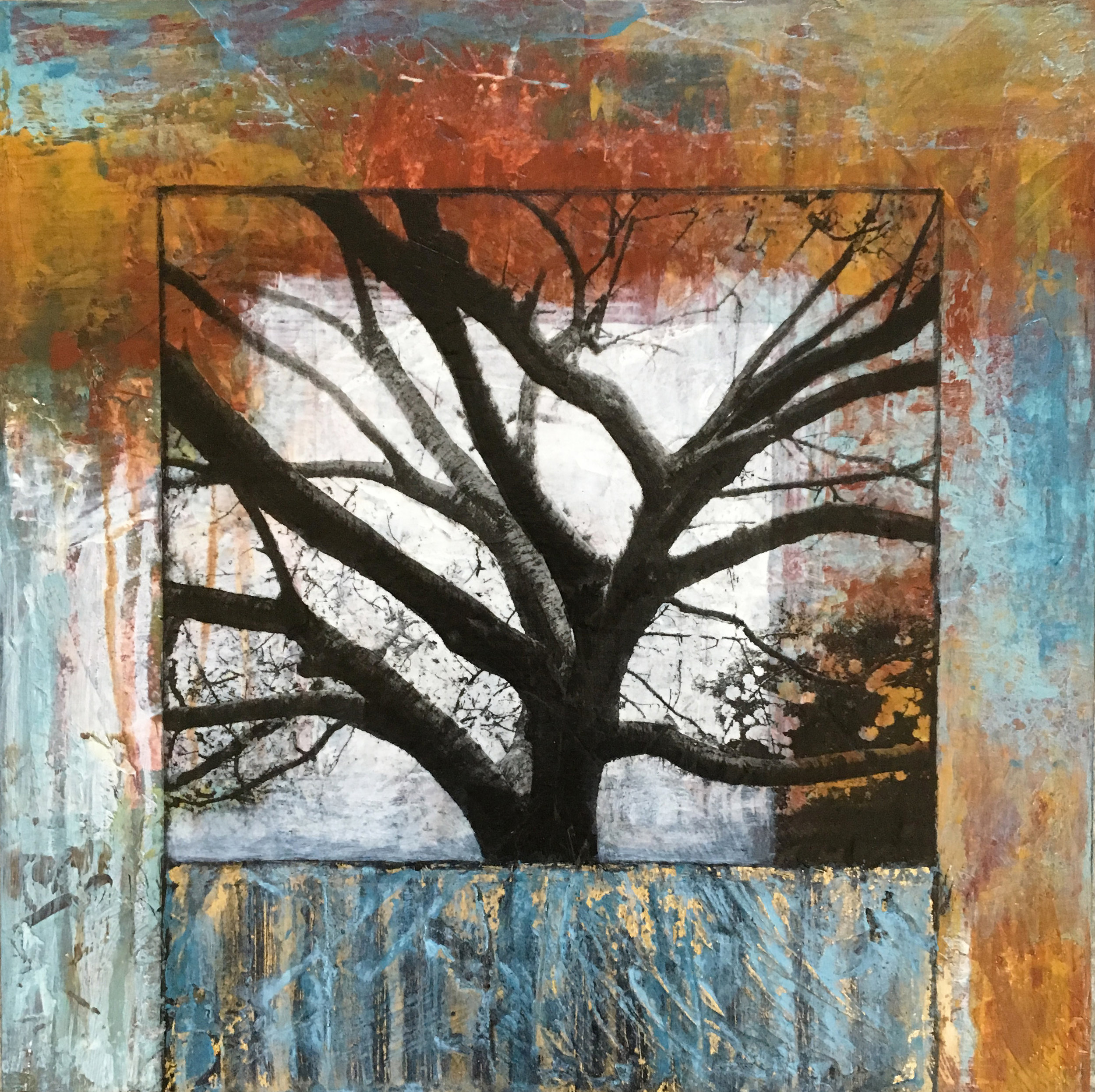Finding the Thread - Focus and freedom in the Creative Process
There is a time for play and experimentation, and there’s a time for focus. Both are important for our growth as artists.
This post is about FOCUS. Never have we needed to resist distractions as we do now. This is why, for my upcoming painting workshop this September in Boulder, CO, I decided to teach about creating a series - so as to narrow and focus the mind.
Sometimes too many options can leave us paralyzed in our creative process. The glare of the blank canvas leaves us like deer in the headlights. Frozen.
The common threads here were trees, the color palette and the break up of space. Created for a show in Santa Fe about, you guessed it, trees! You can see more of these paintings HERE.
But by simply choosing a more narrow path, we are liberated to go deeper into our authentic language, with less of the yackity-yack of the monkey mind pulling us in every direction. This commitment to an intentional, or even arbitrary focus, relieves us from having to reinvent the wheel with each new painting.
I won’t lie, sometimes it’s not easy for me to stay consistently on one track. I love to experiment too much! My rebelliousness naturally resists being hemmed in. I want to be free in the moment to see where the painting will take me.
But sometimes, I’m all over the place, and it’s not serving me or the work. This is when it’s time to create a small series. I like to use 1/4 or 1/8 sheets of Arches 140lb paper - that way I’m not overly invested in materials and can work quickly with relative abandon.
Here are a few ways to get down to it with a series:
Challenges:
Giving yourself a challenge is a great way to stay on track. If you do this on Instagram, Facebook or by email, you are being held accountable by your people, and that is a great motivator. I did a series on Instagram called: 30 Days of Aqua, and by gum, I stuck with aqua for 30 days. The 2 images below are from that series.
It really doesn’t even matter what your focus is for a series, it’s just an opportunity to follow a thread. And yes, along the way you may find you simply MUST go in another direction, so by all means, allow that to direct you.
The point is that you have begun. And if you veer off down another path and find yourself lost again, you can always bring yourself back to the original focus.
Color palette:
Color is powerful and usually the first thing we notice about a painting. It also can really be the thing that trips us up (see my blog post on COLOR), especially when our paint box is a candy shop of gorgeous hues.
But in the afore mentioned series called “30 Days of Aqua”, simply choosing one color (aqua in this case) narrowed my options enough that I felt free to explore other techniques such as photo transfer and collage - as long as I stayed with aqua as my consistent color.
Subjects/Images:
Last year, I was working on a group exhibition that was all about trees. This was relatively straight forward for me, as I have often included them in my paintings. But I wanted to treat them in a new way. In the case of the paintings below, I chose an earthy palette, with a structured composition - hemming in the image of the tree to create a frame and to constrict the boundaries of the image. In that way, the paintings were all very consistent, even though each one had it’s own unique feeling.
Composition:
As mentioned above, the composition of that particular body of work was very consistent in each painting - strong 90 degree angles in contrast to the organic nature of the trees. When painting abstractly such as in the images below, I used similar horizontal strokes with vertical drip marks - as well as the warm/cool color palette that tied these paintings together. I didn’t want this series to be too tight - just loosely flowing with enough similarities to work together on the wall.
Combining elements:
In the examples below, I have used color, texture, composition and mark making (drawing) to keep the thread going through a series of paintings. While each series shown here is different from the others, I was able to keep my focus while creating small bodies of work. I then could move on to another series, having felt that I went deep enough into exploring new possibilities in that direction and can always return.
While the above paintings have a very textural surface, the paintings below were created on smooth slick Yupo paper mounted on panel which makes the paint react very differently. And by keeping the size of the panels the same, with deep 2” sides painted black, they all feel very much like a family.
But of course there’s the flip side of being focused - when we become too similar in our work for long periods of time, simply repeating the same formulaic colors or images, etc. We grow afraid to go beyond what we know, afraid to veer too far from the beaten track, afraid to stretch in case no one likes the work or buys it (that’s the big fear for a lot of artists and keeps them very narrow).
So like all things, we need to find the balance between focus and play. Discipline vs. waiting on the Muse. Allowing our process to meander vs. harnessing the flow in a defined direction.
If you are in Boulder, Colorado this September, sign up for my workshop to create a new series to jump start your painting practice in a new way. Click the button below for more information. Class size is very limited so sign up soon!










